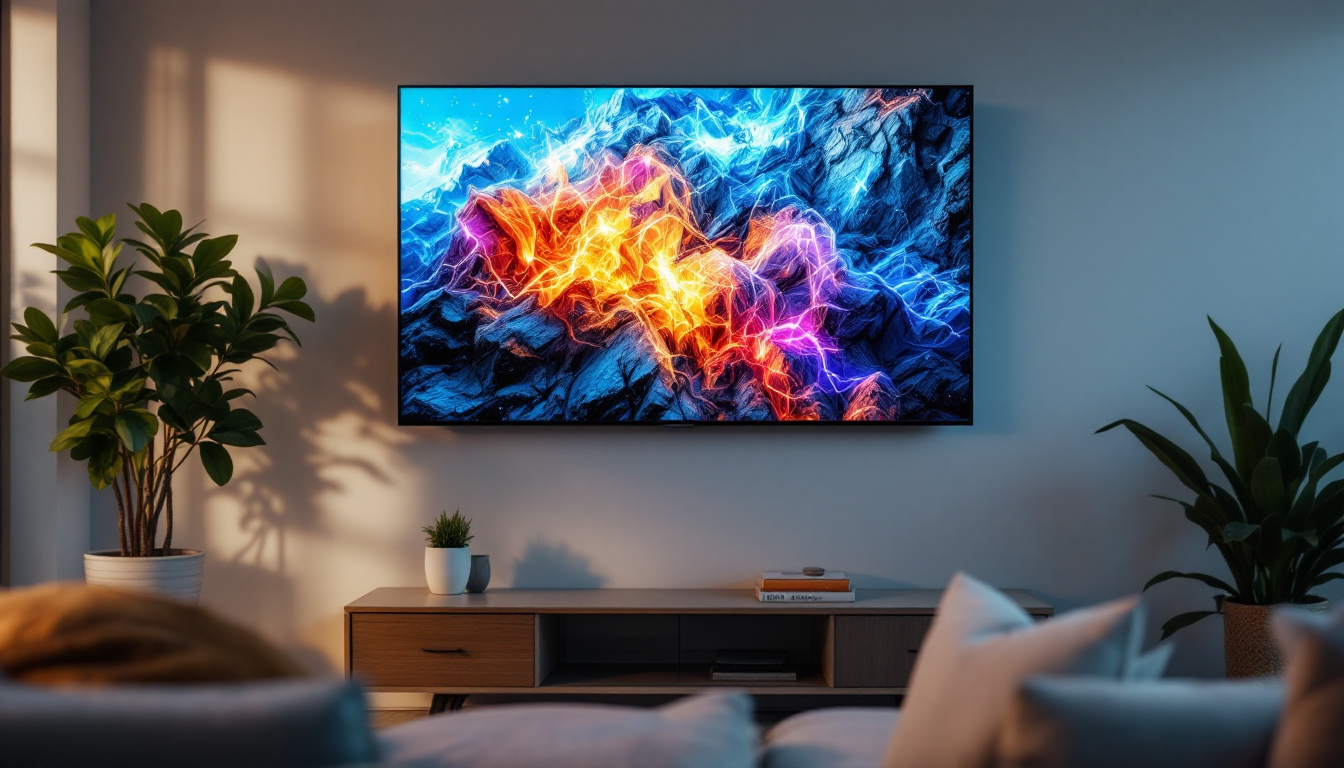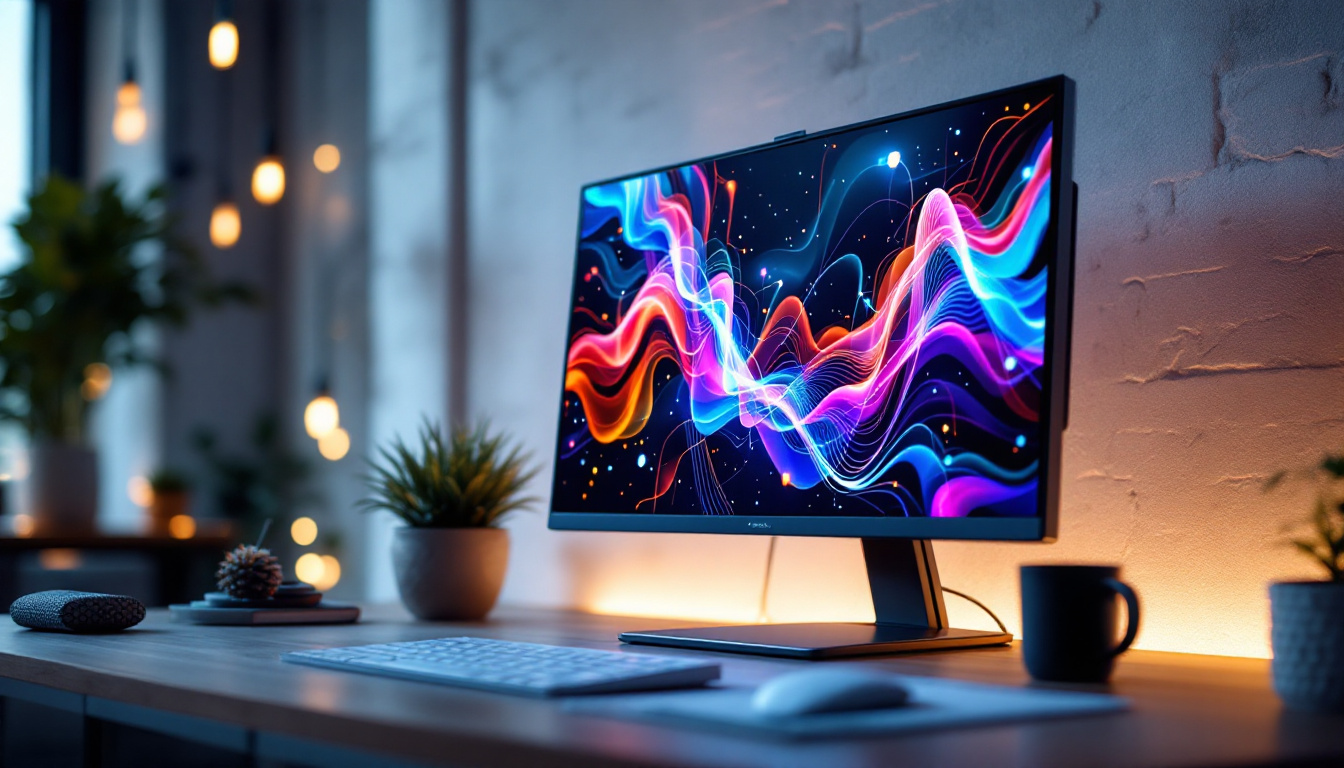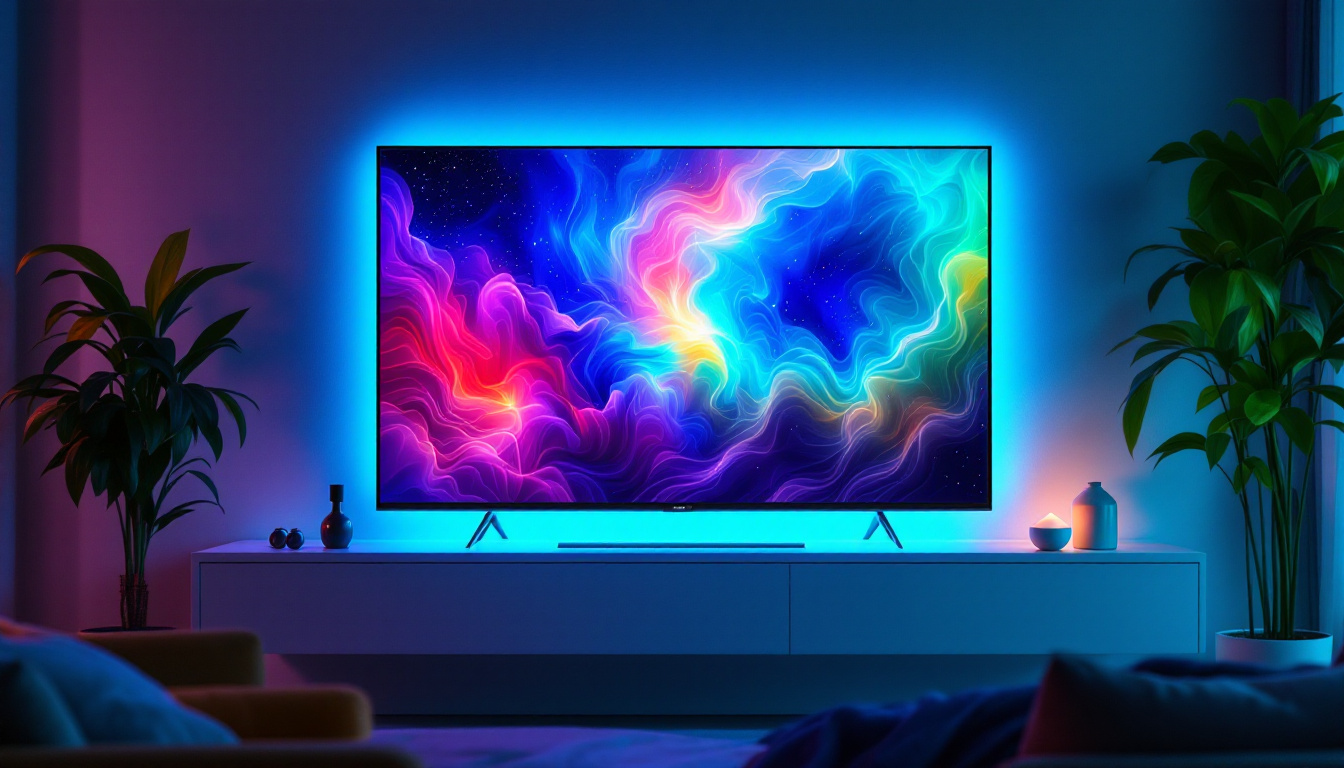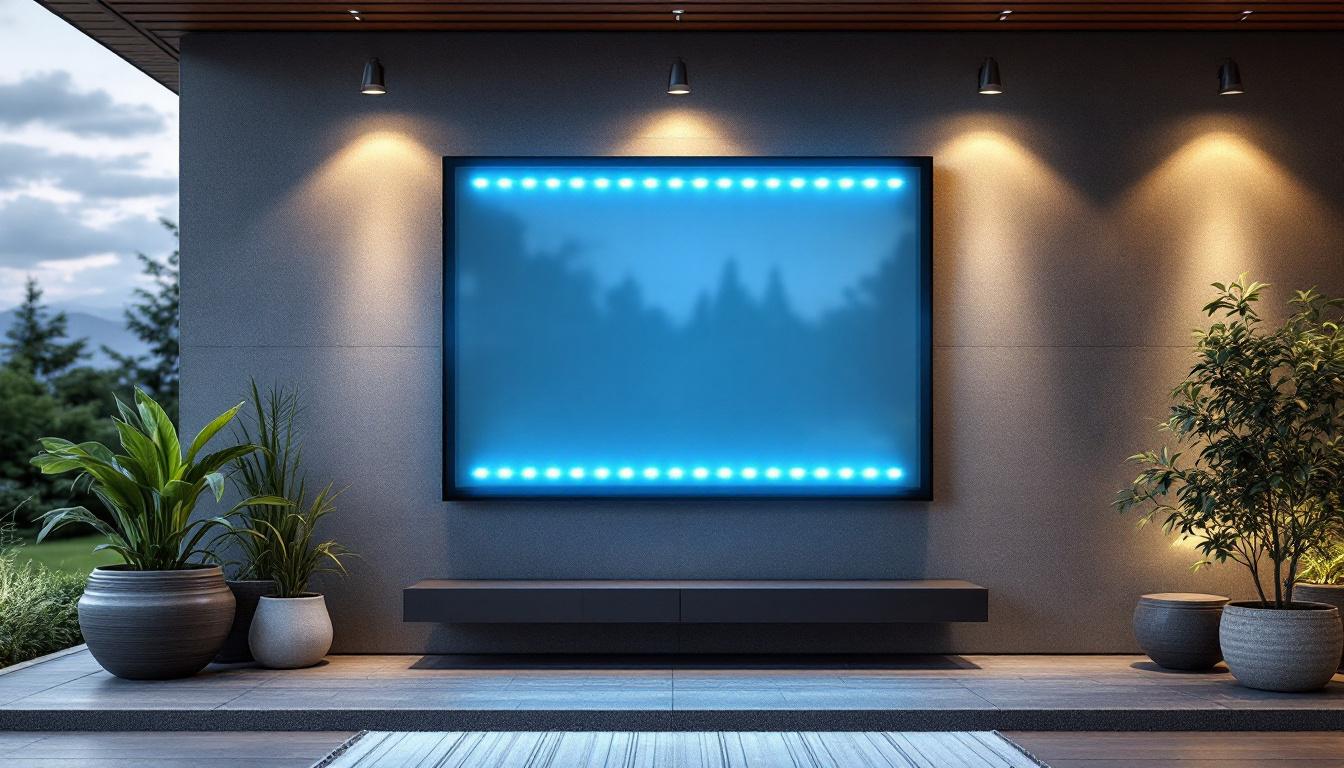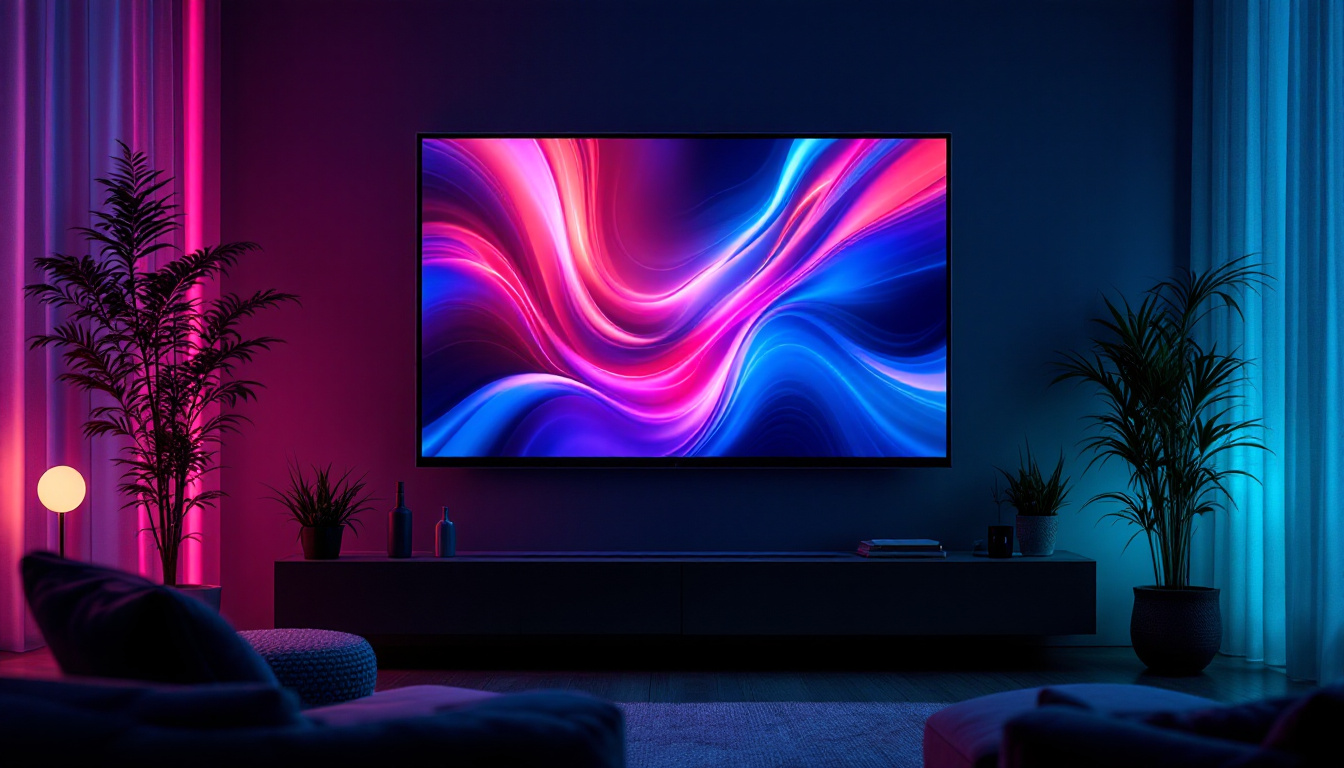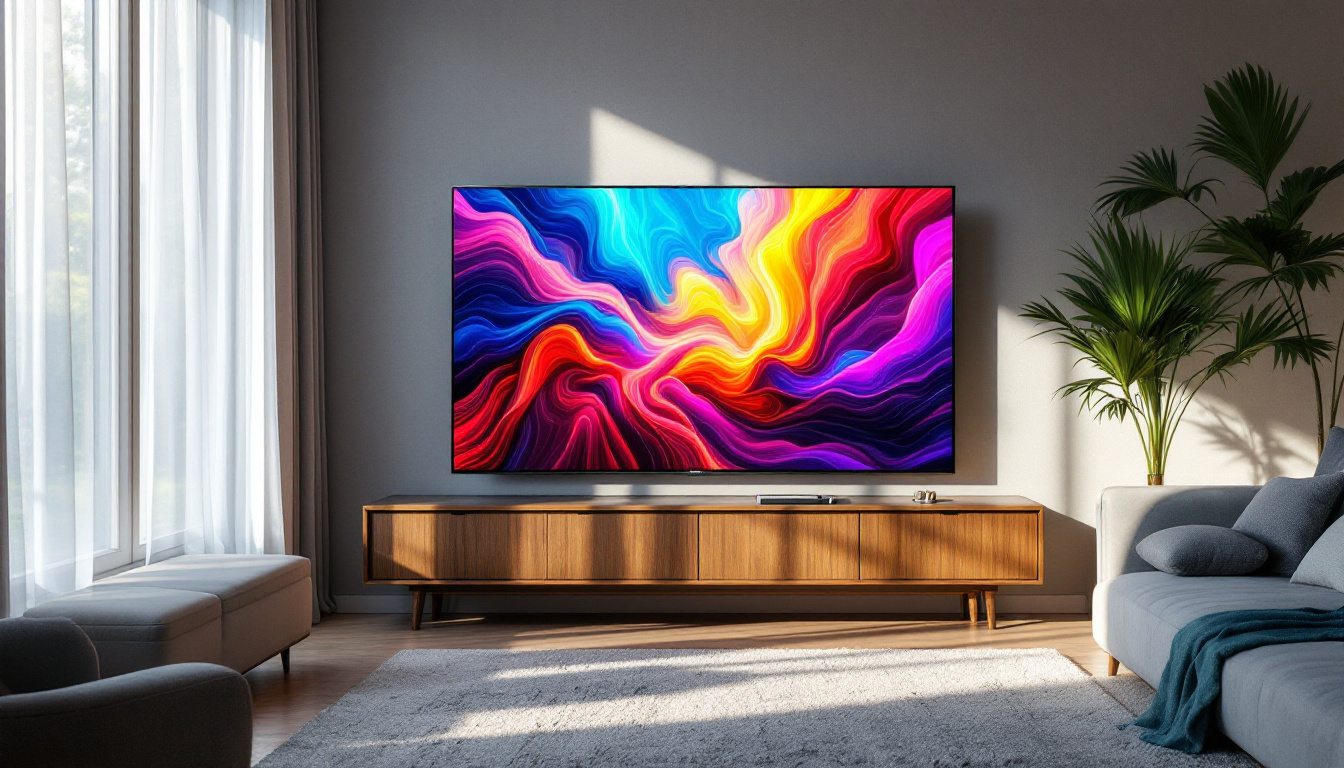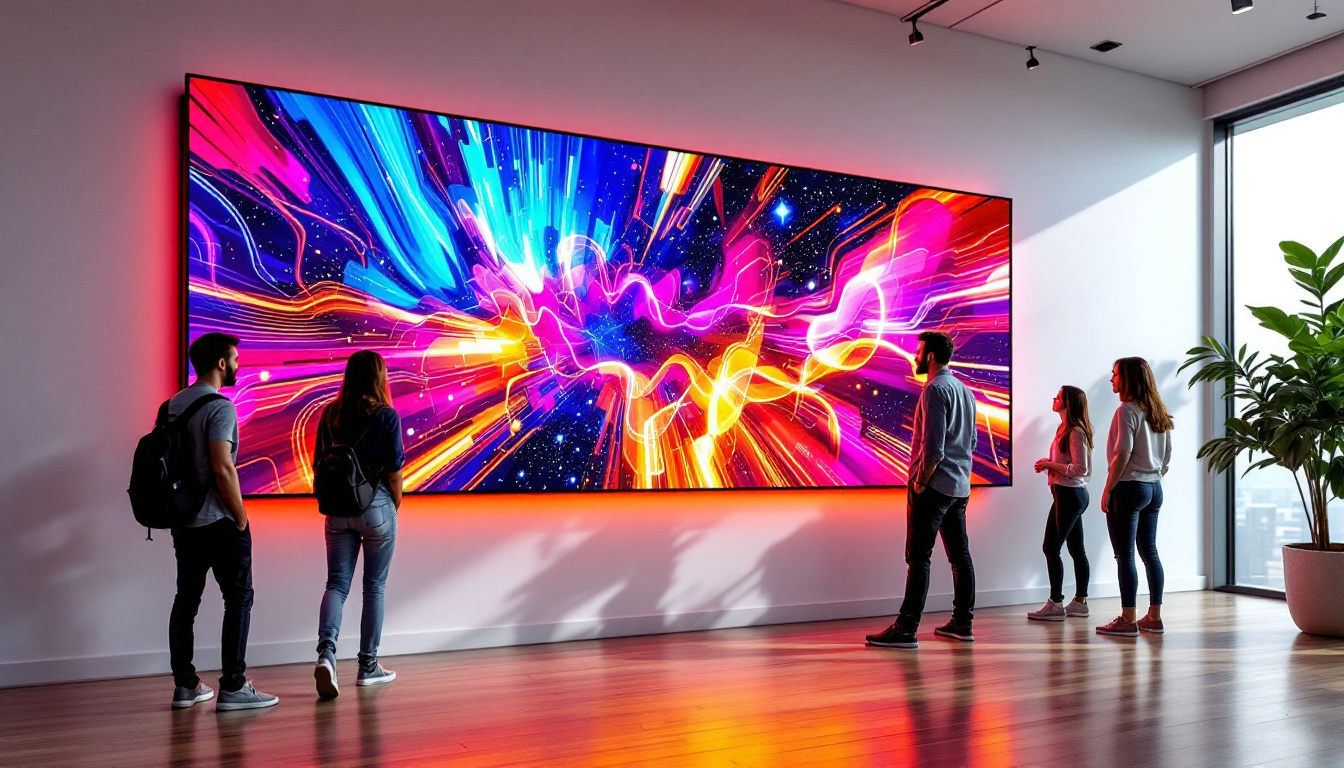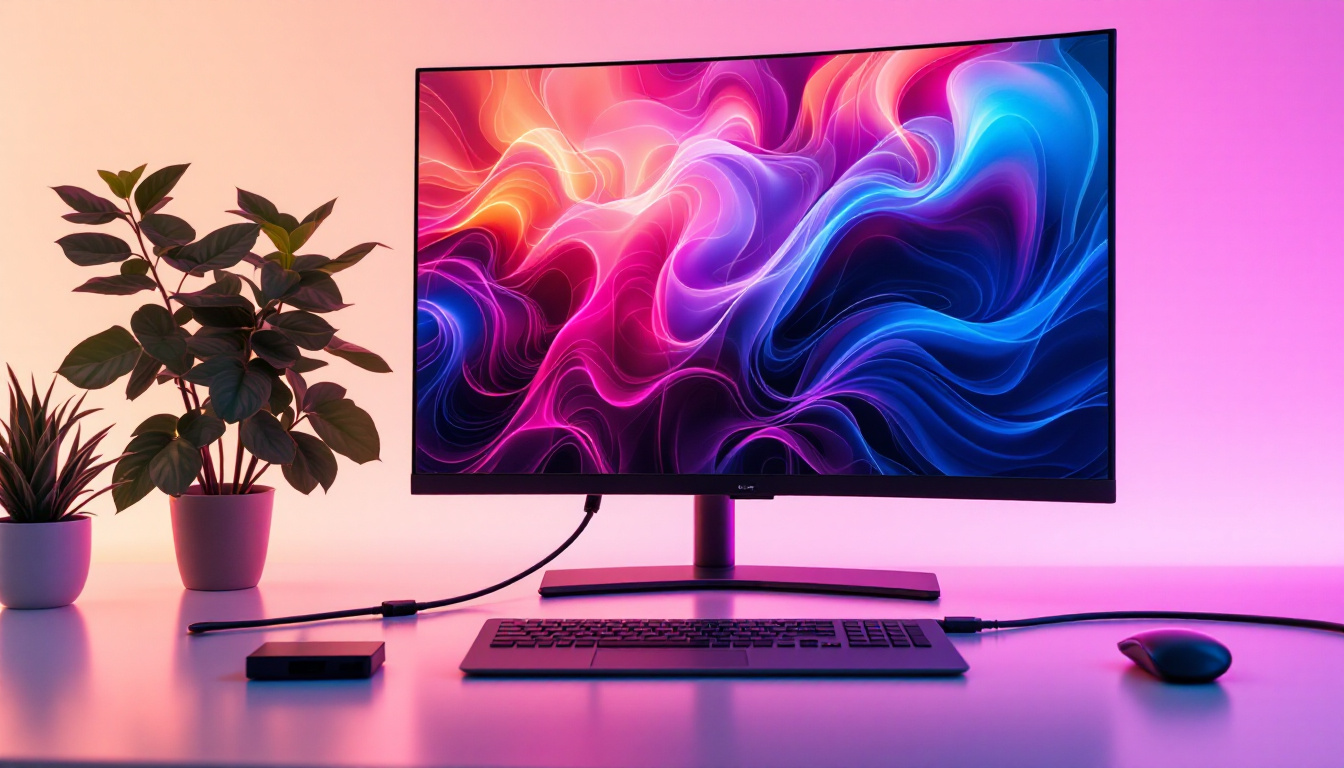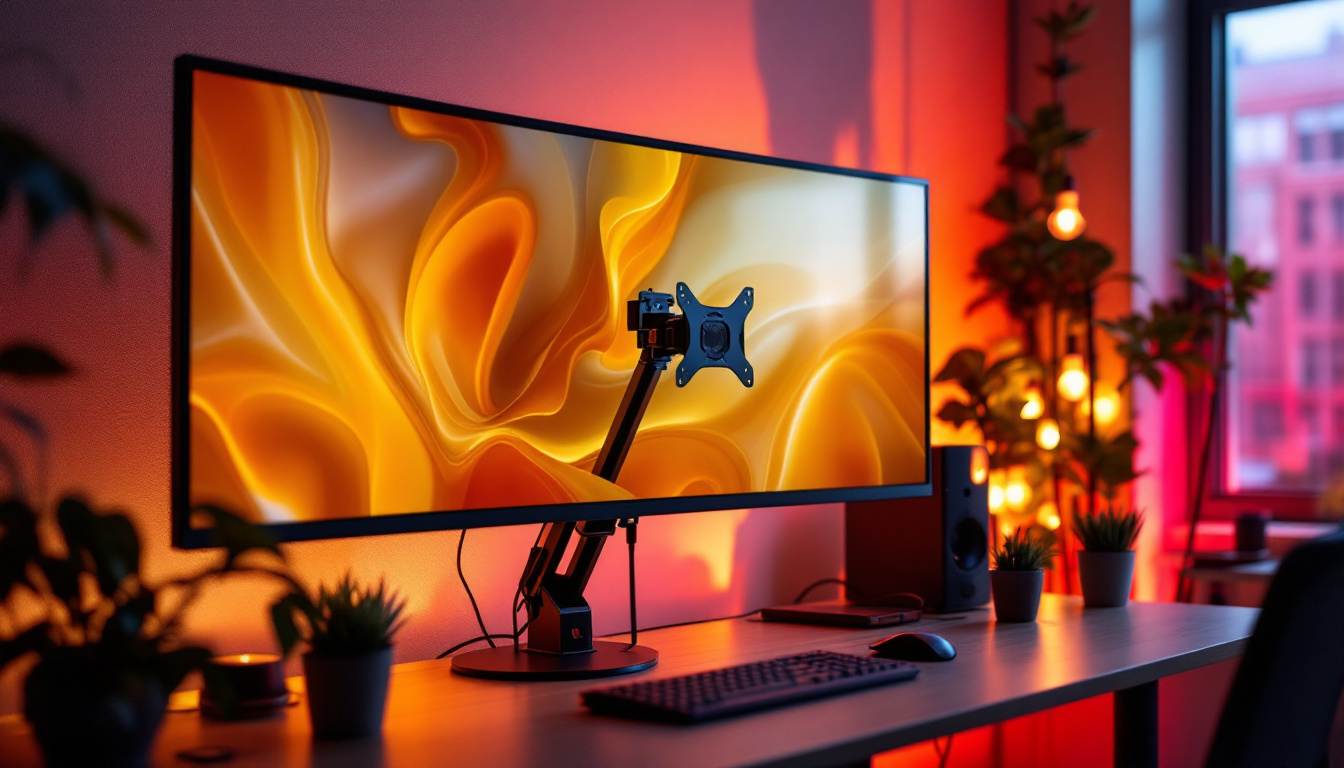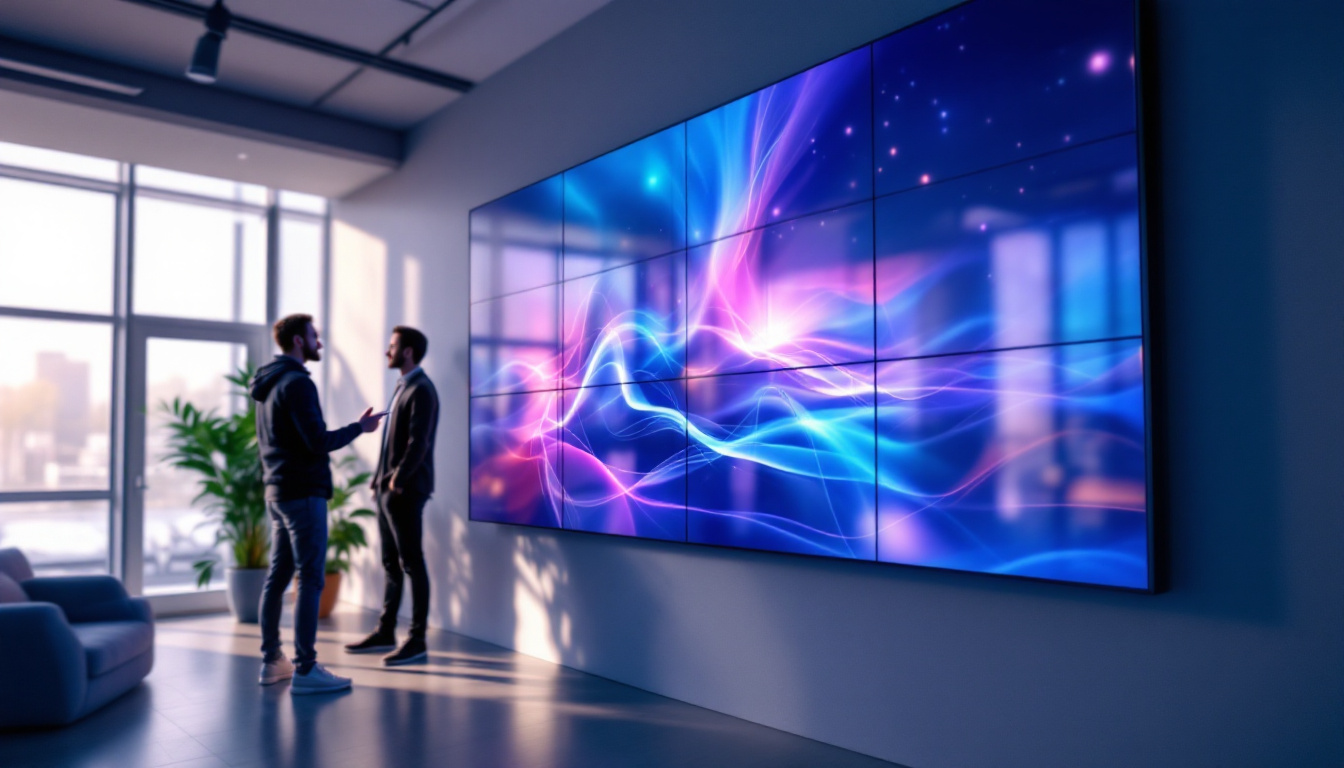In the ever-evolving world of technology, televisions have undergone significant transformations over the years. One of the most exciting innovations is the integration of touch screen technology into LED displays. This article delves into the concept of touch screen TVs, exploring their functionality, advantages, and the technology behind LED displays.
Understanding Touch Screen Technology
Touch screen technology has revolutionized the way users interact with devices. By allowing direct interaction with the display, it provides a more intuitive and engaging experience. This technology is not just limited to smartphones and tablets; it has found its way into televisions as well. The rise of touch screen interfaces has significantly changed the landscape of user experience design, making it essential for developers to create applications that are not only functional but also user-friendly and visually appealing.
How Touch Screens Work
Touch screens operate through various technologies, primarily resistive and capacitive. Resistive touch screens consist of two layers separated by a gap. When pressure is applied, the layers touch, registering the input. Capacitive touch screens, on the other hand, use the electrical properties of the human body. They detect touch by measuring changes in capacitance when a finger comes into contact with the screen. This fundamental difference in operation leads to varying levels of sensitivity and accuracy, with capacitive screens generally offering a more responsive experience.
Most modern touch screen TVs utilize capacitive technology due to its responsiveness and ability to support multi-touch gestures. This allows users to swipe, pinch, and zoom, enhancing the overall viewing experience. Furthermore, advancements in touch screen technology have led to improved durability and clarity, making it possible for screens to maintain high resolution and vibrant colors while being resistant to scratches and fingerprints. This ensures that users can enjoy their favorite shows and movies without any hindrance.
Types of Touch Screen TVs
Touch screen TVs come in various forms, catering to different needs and preferences. Some models are designed specifically for interactive environments, such as classrooms and conference rooms, while others aim to enhance home entertainment systems. The versatility of touch screen TVs means they can serve multiple functions, from educational tools to interactive gaming systems, making them a valuable addition to any setting.
Interactive touch screen TVs are often equipped with specialized software that allows for collaborative work, presentations, and educational purposes. These models may include features such as digital whiteboards, annotation tools, and connectivity options for multiple devices, enabling seamless collaboration among users. In contrast, consumer-oriented models focus on entertainment, enabling users to navigate streaming services, browse the internet, and interact with apps seamlessly. With the integration of voice control and smart home compatibility, these TVs are not just screens but central hubs for home entertainment, allowing users to control their environment with just a touch or a command. As technology continues to evolve, the possibilities for touch screen TVs are expanding, promising even more innovative features and applications in the future.
The Advantages of Touch Screen TVs
Touch screen TVs offer a plethora of benefits that enhance user experience and functionality. These advantages make them an appealing choice for both personal and professional use.
Enhanced User Interaction
One of the most significant advantages of touch screen TVs is the enhanced user interaction they provide. Users can navigate menus, select shows, and control settings with simple gestures, making the experience more intuitive compared to traditional remote controls.
This direct interaction fosters a more engaging environment, especially in social settings where multiple users can participate in choosing content or playing games. The tactile feedback of touch screens adds a layer of satisfaction that remote controls often lack. Furthermore, the ability to swipe, pinch, and zoom creates a more immersive experience, allowing users to explore content in a way that feels more natural and direct. This kind of interaction can also be particularly beneficial for children and older adults, who may find traditional remotes cumbersome or confusing.
Versatility and Functionality
Touch screen TVs are incredibly versatile, serving multiple functions beyond just displaying content. They can be used for browsing the internet, accessing social media, and even video conferencing. This multifunctionality makes them suitable for various environments, from homes to offices.
In educational settings, touch screen TVs can facilitate interactive learning experiences, allowing teachers and students to collaborate in real-time. In corporate environments, they can enhance presentations and meetings, making information sharing more dynamic. The integration of apps and cloud services also means that users can access a wide range of content and tools directly from their screens, eliminating the need for additional devices. This capability transforms the touch screen TV into a central hub for entertainment, communication, and productivity, making it an indispensable tool in today’s digital age.
Space-Saving Design
Touch screen TVs often feature sleek designs that can save valuable space. With the elimination of bulky remotes and the integration of touch functionality, these TVs can fit seamlessly into modern living spaces. Wall-mounted options further enhance the aesthetic appeal while maximizing floor space.
Moreover, many touch screen TVs come with customizable settings that allow users to adjust the display according to their preferences, whether it’s for gaming, movie watching, or casual browsing. This adaptability not only enhances the viewing experience but also allows the TV to blend harmoniously with existing decor. Additionally, some models incorporate smart home technology, enabling users to control other devices in their home directly from the TV. This interconnectedness adds another layer of convenience, making touch screen TVs not just a source of entertainment but also a central component of a smart home ecosystem.
LED Display Technology Explained
LED (Light Emitting Diode) technology has become the standard for modern television displays. Understanding how LED displays work is crucial to appreciating the quality and performance of touch screen TVs.
What is LED Technology?
LED technology involves the use of light-emitting diodes to produce images on the screen. Unlike traditional LCD TVs that use fluorescent backlighting, LED TVs use a matrix of tiny LEDs to illuminate the display. This results in brighter images, better contrast, and improved energy efficiency.
LED displays can be categorized into two main types: edge-lit and full-array. Edge-lit LED TVs have LEDs positioned along the edges of the screen, while full-array LED TVs have a grid of LEDs behind the entire display, allowing for more precise control over brightness and contrast.
Benefits of LED Displays
The advantages of LED technology are numerous. One of the most notable benefits is the superior picture quality. LED displays offer vibrant colors, deep blacks, and excellent brightness levels, making them ideal for various viewing conditions.
Additionally, LED TVs are more energy-efficient compared to their predecessors. They consume less power while delivering high-quality images, making them an environmentally friendly choice. This efficiency also translates to lower electricity bills over time.
Combining Touch Screen and LED Technologies
The integration of touch screen technology with LED displays creates a unique viewing experience that is both interactive and visually stunning. This combination has the potential to redefine how users engage with their televisions.
Interactive Entertainment
Touch screen LED TVs are transforming entertainment by allowing users to interact with content in innovative ways. Viewers can browse through streaming services, select shows, and even play games using simple gestures. This level of interactivity enhances the overall viewing experience, making it more enjoyable and engaging.
Moreover, the ability to share content on social media directly from the TV adds a social dimension to viewing. Users can post their favorite shows or moments in real-time, fostering a sense of community and connection.
Educational and Professional Applications
In educational settings, touch screen LED TVs serve as powerful tools for interactive learning. Teachers can display lessons, engage students with quizzes, and facilitate group discussions, all through a touch interface. This interactive approach can enhance retention and understanding, making learning more effective.
In professional environments, these TVs can be used for presentations, brainstorming sessions, and collaborative projects. The touch interface allows for real-time editing and sharing of ideas, making meetings more productive and engaging.
Challenges and Considerations
While touch screen LED TVs offer numerous advantages, there are also challenges and considerations to keep in mind. Understanding these factors can help consumers make informed decisions when choosing a television.
Cost Implications
Touch screen LED TVs tend to be more expensive than traditional models due to the advanced technology involved. The cost can be a significant consideration for consumers, especially those on a budget. However, the added functionality and interactivity may justify the investment for many users.
It is essential to evaluate the features and benefits of touch screen models against personal needs and preferences. For some, the enhanced experience may be worth the additional cost, while others may prefer to stick with conventional TVs.
Durability and Maintenance
Touch screens can be more susceptible to damage compared to traditional screens. Fingerprints, smudges, and scratches can affect visibility and overall aesthetics. Regular cleaning and proper care are essential to maintain the appearance and functionality of touch screen TVs.
Additionally, the technology may require updates and maintenance over time. Users should consider the long-term implications of owning a touch screen TV, including potential repairs and software updates.
Conclusion
The emergence of touch screen technology in LED displays marks a significant milestone in the evolution of televisions. By combining interactivity with superior picture quality, touch screen LED TVs offer an engaging and versatile viewing experience. Whether for entertainment, education, or professional use, these innovative devices are reshaping how users interact with content.
As technology continues to advance, the future of touch screen TVs looks promising. With ongoing improvements in display quality, functionality, and user experience, these devices are set to become a staple in homes and workplaces alike. Understanding the intricacies of touch screen and LED technologies can empower consumers to make informed choices, ensuring they select the right television to meet their needs.
In summary, touch screen LED TVs represent the convergence of two powerful technologies, creating a dynamic platform for interaction and entertainment. As consumers increasingly seek immersive and engaging experiences, these innovative devices will undoubtedly play a pivotal role in shaping the future of television.
Discover the Future of Interactive Viewing with LumenMatrix
Ready to elevate your viewing experience with the latest in touch screen LED technology? LumenMatrix is at the forefront of this innovation, offering a wide array of LED display solutions that bring your content to life. From Indoor and Outdoor LED Wall Displays to specialized options like Vehicle, Sports, and Floor LED Displays, LumenMatrix tailors to every need. Embrace the future of visual communication and create unforgettable visual experiences with our Custom, All-in-One, and Transparent LED Displays. Check out LumenMatrix LED Display Solutions today and transform the way you engage with your audience.

